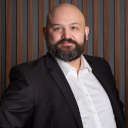A guide to process mapping - everything you need to know
Do I need a process map?
If you're reading this article, you're certainly interested in the topic of process mapping and how it affects the business. Typically, this is particularly interesting for owners and managers. If you are in this role and are experiencing chaos in your business despite using procedures, then you definitely need a process map. Creating a process map is not very complex - it requires patience and accuracy, but most importantly it requires people.
Business process - what is it?
It is a certain sequence of activities to accomplish a certain goal in an organization. There are many different business processes, which depend on the type of business and the industry in which the company operates.

In manufacturing companies we find production processes related to the manufacture of specific products or the providing of manufacturing services for a dedicated item. These are the classic "Make To Stock" and "Made To Order."
Purpose of business process mapping
There can be many different purposes in which process maps are laid out. The main reason in companies that have been in existence for some time is the desire for optimization. Only when the processes are outlined and there are clear connections between them, can you clearly see what factors are important to getting the process right.
Optimization is the essence of the process approach, and having a process map is a means to the end of either saving process execution time or reducing resource consumption by eliminating irrelevant steps.
For new companies or departments, process mapping can be a form of research into how to navigate a particular space. A detailed process map helps study the process and the impact it has on the created outputs of the process, namely the results obtained.

Types of business processes
Several types of processes are distinguished. These are usually:
- Core processes - these are the key processes for the operations of the department or company.
- Management processes - include a wide range of operations related to planning, personnel management, review (management system), internal audits, etc.
- Support processes - may involve supervision of data circulation, control of technical equipment, maintenance (in manufacturing companies), internal transportation and other similar processes.

A processes map and a process map
What is the difference between a Processess Map and a Process Map? A process map indicates one complete, selected process. However, as you can probably see from your company, not everything is zero-sum. Many elements are interrelated. That's why there is also such a thing as a processes map. It's all the processes that exist within an organization (usually a graphical representation of them) along with their connections.
During the creation of the map you will certainly encounter the concept of a sub-process. This is nothing more than something that has to happen - another set of steps of a process as a result of something that happened in the parent process.

Reasons for creating a processes map
A process map exists mainly so that executives can get a top-down view of what their organization looks like. Process mapping can be done in various forms: bottom-up or top-down. The choice of method depends on what the purpose of the process is. Companies create processes maps for a variety of reasons:
- too high costs of service
- too long time of completion of individual tasks by employees
- increased rotation of employees in the company
- too long time to introduce new employees
- unwillingness of employees to follow procedures (the famous "because it makes no sense")
- lack of full insight into how a particular division or department operates
- increasing number of complaints or returns
- inconsistent rules of operation in different departments of the company
- eagerness to manage quality
- desire to further improve the organization
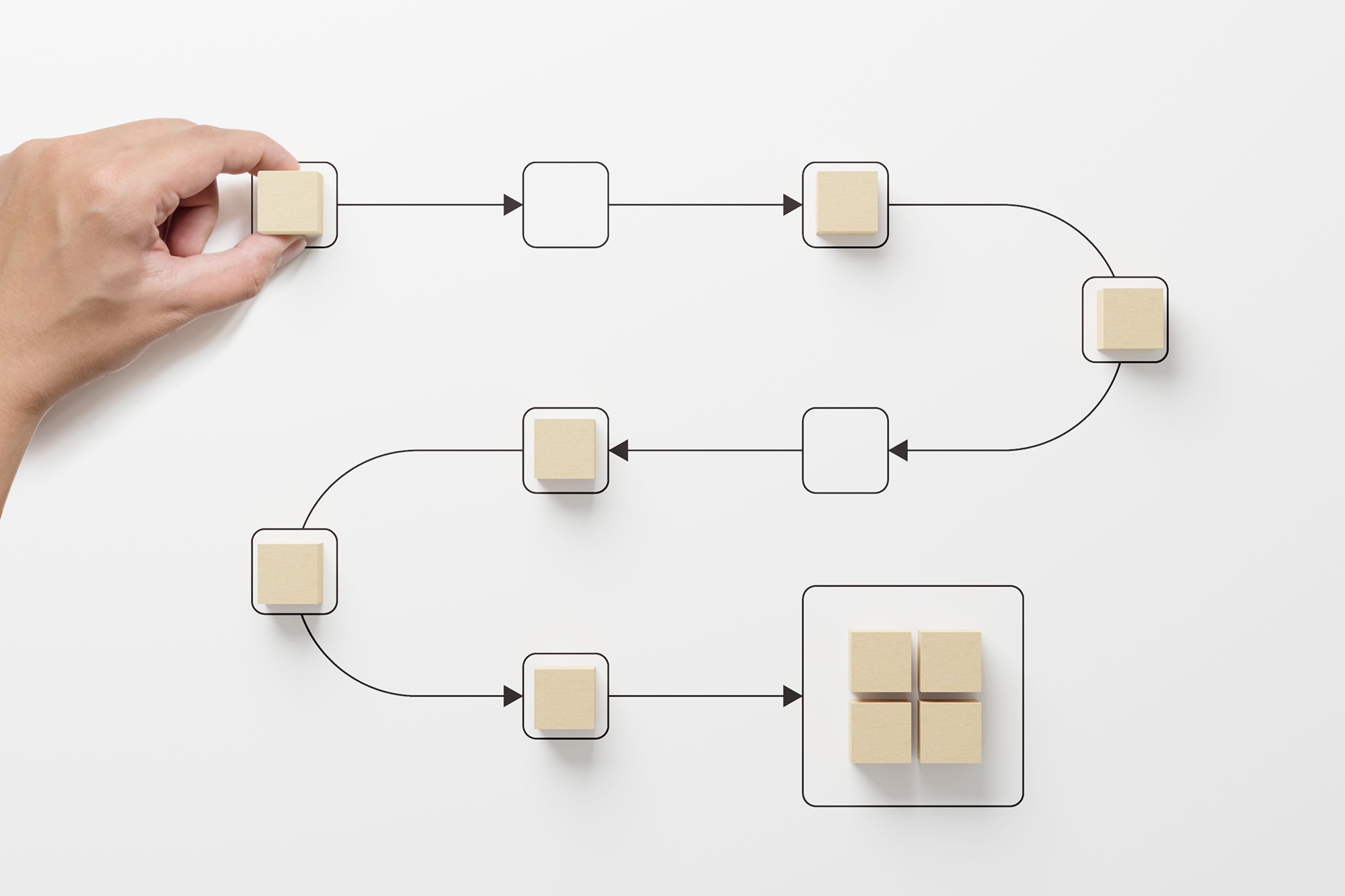
The benefits of process mapping for a company
Process mapping offers many benefits to companies. Mostly they are related to the reasons for process mapping mentioned above. So, respectively, they can be:
- reduction of operating costs
- reduction of task execution time
- reduced employee turnover
- faster introduction of new employees
- no resistance to the use of procedures
- full insight into how each process works
- reducing the number of complaints - improving customer service
- creation of uniform operating principles and support of organizational culture
- improvement of organizational structure
- Creation of more effective internal communication
- improvement of product quality or service
- clear and understandable workflow
- greater agility when implementing changes
This, of course, is not all the benefits of process mapping. As with any change, it is necessary to have a purpose, a mission and your own answer to the "Why" question. Only then it makes sense and brings real value to the organization.

Benefits of process mapping for the manager
The company's perspective on process mapping is very broad and usually points to a company that already has a larger structure. The manager's perspective, on the other hand, is a bit different, especially in terms of the importance of the elements involved. The ability to work from the bottom-up method has more application in smaller or new company departments. Usually, the Manager has no trouble in the day-to-day organization of the activities and duties that his people perform. In this position, it is much easier to ensure that there is an identification of processes worth mapping - this lies in his power, and the people performing the process are directly at his disposal.
The end of one department's process is often the junction point where the process begins for another team. The different operations carried out by different teams may be related processes or sub-processes in an overarching process.
If we summarize the main benefits of the manager - they overlap with those of the company, but are stronger in meaning:
- rapid onboarding of new people - so important at certain times of the year, such as Christmas or summer vacations
- reduction of time to perform tasks - here always less human resources means less cost
- improvement of product quality or service

Process mapping steps
Creating a process map is worth doing in this way:
Process Mapping Step 1: Process Identification
You need to decide what element is important and needs attention. Perhaps it is an element that affects the speed of completing a task or responding to a customer. Name this process and move to the next step.
Process mapping step 2: Process participants
Verify who is involved in the process - the participation of these people is necessary to correctly identify the key elements of the process. A properly selected team will be important for specifying the elements highlighted.
Process mapping step 3: Basic information
Gather and discuss the following with the assembled team:
- what defines the starting point of the process?
- when does the end of the process occur?
- what happens between the start and the end of the process
- process input - what information is needed for execution?
- process output - what must occur at the end of our process?
- responsibilities of the particular people involved
The boundaries of the process are a very important element to discuss, as is the range of inputs necessary for the process to run smoothly. Spending time on these elements will save time and work in future process mapping steps.
Process mapping step 4: Describe everything
Having the elements from the previous step, ask your team to organize all the activities and describe the whole thing. You can do this in the form of bullet points or present it in the form of a graphic process map.
The most important thing is that the form of description should be understandable to the whole team and people who were not a part of the team creating the initial description.
Process mapping step 5: Analysis
The first process mapping is never the final one. The essence of the process approach implies continuous optimization. Analysis of a given process should be regular and performed using the Deming cycle.
Process mapping step 6: Maintenance, monitoring and improvement
To be able to monitor a process through the Deming cycle you should establish measures that will objectively indicate how the process is performing. For example, if our process is the handling of a complaint, the measure could be the turnaround time of the request.
Deming cycle (PDCA)
Under PDCA, we can monitor how our process is performing:
- PLAN - determine what average process execution time we should achieve
- DO - execute the process for each request by measuring the time
- CHECK - for example, once a week or once a month, check the execution time of requests
- ACT - this is the moment for another analysis of the process flow. You may find that in certain cases you need to act differently or measure a process separately.
I have a process map - what's next?
Process mapping is an essential tool for implementing lean management. Lean Management is based on processes and optimization.
Another aspect is value stream mapping - having a complete processes map we can look at how our company delivers value to customers. That in turn allows us to more easily make decisions about priorities for specific processes.

Control over processes - use tools
Once you have a process map and you want to have full control over it, it makes sense to use tools as a further step. For example, Fortask gives you the ability to create a template that will add the appropriate subtasks for each task execution:

The individual steps can be broken down as desired and have elements such as a checklist to complete as part of the process, or links to a knowledge base or other materials.
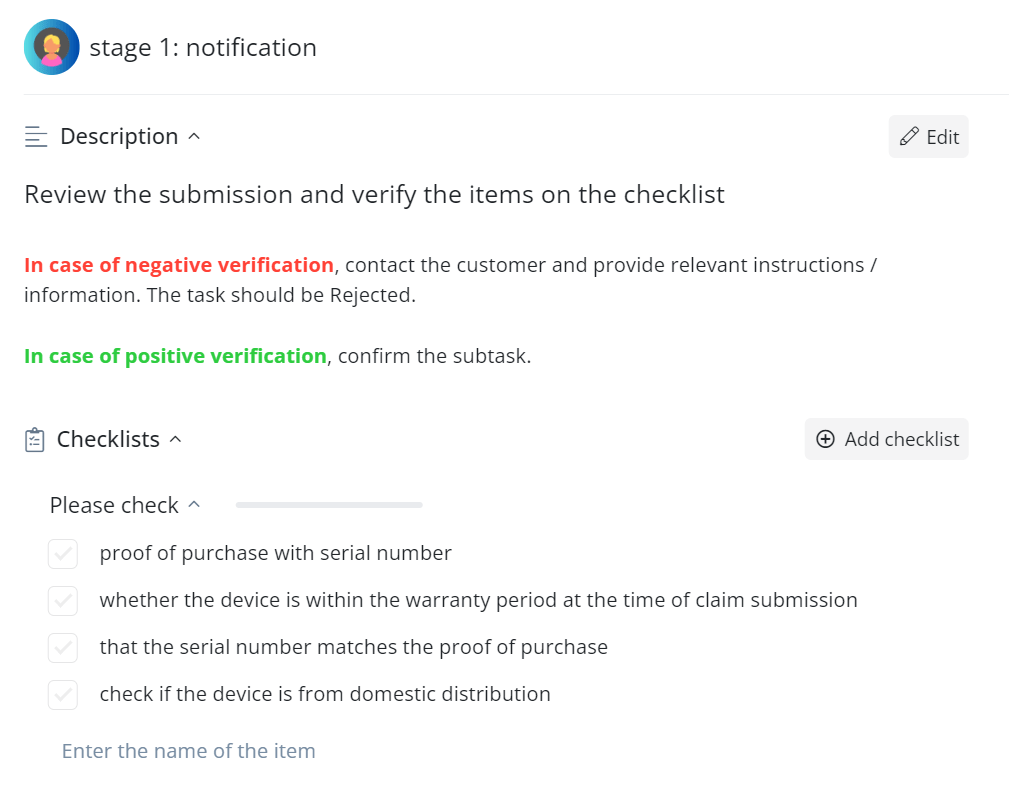
This way you will ensure that the employee will follow the established steps of the process. In addition, the tool allows you to have a conversation in the comments section. Each employee gets dedicated notifications about events related to a task, subtask or conversation:

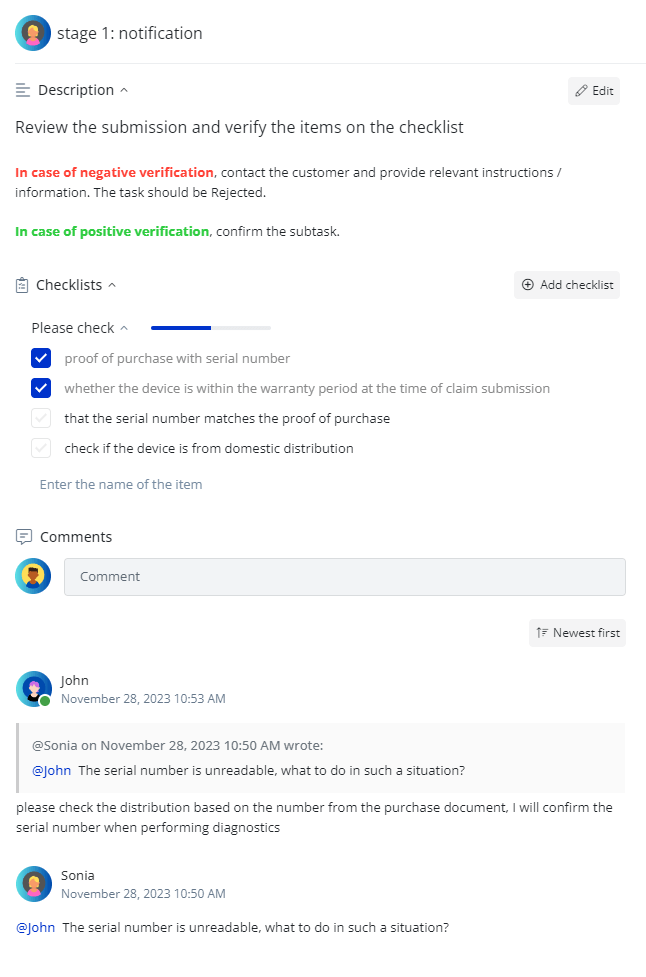
This location of the conversation allows you to perfectly understand the context and does not need to include details and description. It is enough that it contains the substantive conversation, which is also visible from the task level. In addition, Employees can record the time it takes to complete their tasks, so the manager can monitor how the process is going.
You can view all tasks as a board, list or dashboard - to your liking and preference. With a process flow diagram, you can adjust your task view or dashboard to know when a task reaches a starting point - such as a "Completed" status.
You can also use a view of specific employees or with a breakdown of the corresponding tasks.

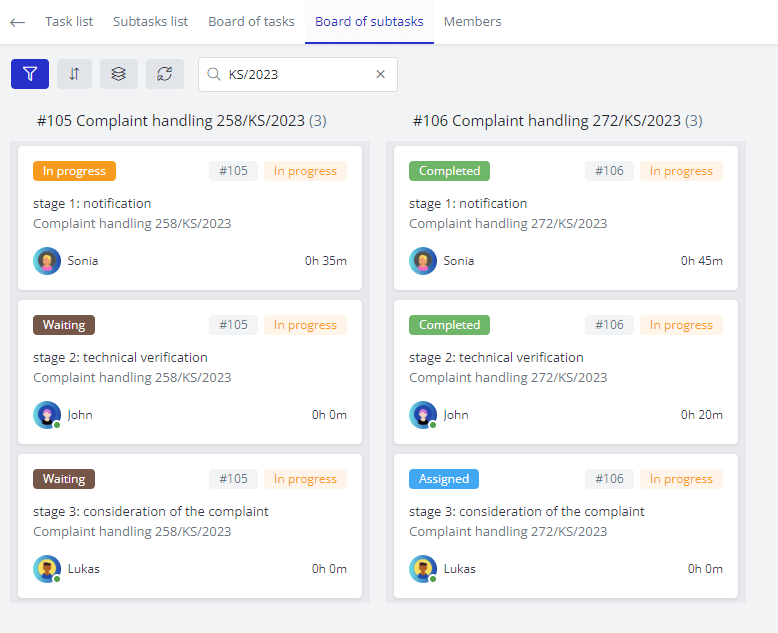
Fortask provides various variants of the view, inspired by the Kanban methodology. One advantage, for example, is the numerous grouping options for such a view:
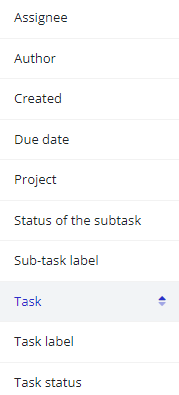
The application also provides the ability to build a template consisting of subtasks and checklists corresponding to the tabular form of the process diagram. For those who would like to perform process mapping directly in the tool (whether through lack of time or a distributed, asynchronous team), there is an option to create a template based of an existing task.
Therefore, using the principles described above, you can perform process mapping by reworking your process through an actual task. This approach requires analysis of an ongoing or completed task, revisions and consultation with your team, but it allows you to reliably render your process without an actual process map.
Process mapping - conclusion
So, as you can see, process mapping is not as difficult as it might seem, and it's worth spending some time on it, because the benefits (for both the company and employees) can be many. It's also worth remembering that having a processes map doesn't end the subject, as using the right tools turns out to be just as important. If only to ensure that none of the established steps are missed.
And if after reading our article you still say that process mapping is a complicated process, we have something that will help you understand it even better. It's a fully free e-book prepared by Fortask specialists that will systematize your knowledge and help you make changes in your own company.
